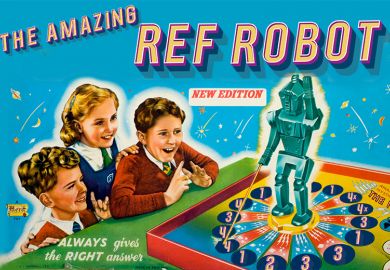Cyril Connolly said that you read journalism once and literature twice. The one is of the moment, the other for all time. But try telling that to Richard Keeble and Sharon Wheeler, editors of The Journalistic Imagination. They maintain that the conventional distinction between the two types of writing is simply the product of prejudice by English professors who refuse to recognise the literary merits of the Daily Mail.
Perhaps the boldest claim of this fast-paced volume is that the spread of newspapers, particularly after the collapse of the Licensing Act in 1695, paved the way for the development of the novel. The empirical approach, the emphasis on human interest and the use of everyday language were all part of the journalist's art before they became the basis of the novelist's. Historians of the genre will demur, which should provoke a good bun fight.
The best essays here consider the relationship between an author's press pieces and his or her more obvious imaginings.
John Tulloch pays tribute to Charles Dickens' journalism and notes how the techniques he used in his early sketches, including mimicry and shifting points of view, were refined in his novels.
Linden Peach makes a similar point about Angela Carter, whose theatrical, "carnivalesque" novels are rooted in her articles for New Society, which "zipped between lenses, traditions and cultures".
But journalism isn't just an apprenticeship in style, it is also an opportunity to find one's own voice, which is the hallmark of all genuine literature. William Hazlitt, who championed the aesthetic of originality, ironically whispered in his own words but roared in those of others. War correspondent Martha Gellhorn found her tongue loosened more in her dispatches than in her art. She also scooped her husband, Ernest Hemingway, by reporting the D-Day landings from the beach while the man of action "did not actually touch sand" until it was safe for him to do so.
This is one of many nuggets lurking in the collection. I didn't know that the 19th-century writer Armandine Aurore Lucile Dupin, better known as George Sand, used to show up at newspaper offices dressed as a man. Nor that Graham Greene kept a copy of the writ issued by 20th Century Fox for his criticism of the child star Shirley Temple on his wall. Such biographical information is a reminder that good writing, whether it's an essay or an editorial, relies on a strong sense of the particular.
This collection is an ideal introduction to literary journalism. Each chapter is prefaced with a brief overview of each author and divided into clear subheadings, which gives it a newspaper-like appearance. The reader will have one or two queries. What was the basis for the selection of authors? We have writers from England, France and America, but there is no rationale for the choice. The more important question is why we should treat journalism as literature unless, of course, those who work for the press invent everything they write. Surely not? In an age of spin, misinformation and the erosion of liberty you would expect professors of journalism to have more pressing priorities than deciding whether The Observer's Henry Porter is on a par with Proust.
The editors are wrong. Literary artists should be jealous of journalists. They have more power and influence, although that's not saying much. Still, better to be heard while you are alive than read when you are dead.
Gary Day is principal lecturer in English at De Montfort University
The Journalistic Imagination: Literary Journalists from Defoe to Capote and Carter
By Richard Keeble and Sharon Wheeler
Routledge
176pp
£18.99
ISBN 9780415417242. Published 17 September 2007
Register to continue
Why register?
- Registration is free and only takes a moment
- Once registered, you can read 3 articles a month
- Sign up for our newsletter
Subscribe
Or subscribe for unlimited access to:
- Unlimited access to news, views, insights & reviews
- Digital editions
- Digital access to THE’s university and college rankings analysis
Already registered or a current subscriber?



